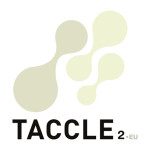I really like the Virtual field trips lesson, but I would recommend using the Google World Wonders Project as a starting point. With the Street View technology the Cultural Institute made a lot of Unesco heritage sites accessible, both from modern and ancient times. Of course your students can have a good look around, but Full Article…
Virtual field trips
Google Street View is great for snooping around places you’ve never been to but did you know that you can sail down the Amazon, explore the Great Barrier Reef, look inside the Iwame Silver Mine, see Scott’s hut in Antarctica or wander around Stone Henge? Other exciting images are this shipwreck off the coast of Full Article…
Collecting things
Scientists through the ages have always liked to organise things into collections and taxonomies as a way of better understanding them or providing a logical methodology for studying them. A great way to do this online with your class is to use Pinterest but beware, it can get addictive! Here is our collection of STEM “pins” but Full Article…
Science Comics
We all know how much children like doing hands-on science and finding out for themselves how things work. Sadly, we also know that writing up their experiments according to very rigid criteria is guaranteed to dampen their natural curiosity and turn science into a chore. Nic has come up with a novel way of recording Full Article…
Glogs
Glogster is a perfect tool for pupils to present or communicate information. You can use it for creating posters, fact files, project boards or ‘how to…’ instructions. It also serves as a good entry level activity to blogging. You can put text, images, audio and video files on your Glog and add hyperlinks as well Full Article…
Light and shadows
Here’s a great primary school resource from BBC schools about light and shadows – it’s a game you can play in groups or as a class. Before you play the game try out all or some of these introductory activities Brainstorm a list of things that ‘give out light’. (List everything learners suggest, even if Full Article…





 English
English Nederlands
Nederlands Deutsch
Deutsch Italiano
Italiano Español
Español Português
Português Română
Română Cymraeg
Cymraeg